Reflection
Visiting Reality in the Anonymous and Weak Light
A Conversation between Chu Yun and Hu Fang
Chu Yun’s practice has demonstrated a continual pursuit of processes to obscure pain and happiness. He remains skeptical of dispositions that can be clearly defined by explicit suffering, joy, tragedy, or anger. Chu Yun’s pursuit of the “hidden” derives from his recognition of the real. This has, in turn, made him increasingly willing to abandon the use of strong visual images to attract people, as well as compel him to ponder the question of how an artist can become a medium for transcending the visible elements of everyday life. Smile of Matter is the first solo exhibition of Chu Yun (1977, based in Shenzhen and Beijing), which invites people to experience the invisible power hidden within his art works – In the end, you will realize the disappearance of your imaginary works, which, nevertheless, return to the works eventually. (Chu Yun). The following conversation took place on the occasion of Chu Yun’s solo exhibition at Vitamin Creative Space and explored the stories behind his works.
Hu Fang
20 Square Meters
Hu Fang (known as “Hu” hereon): I think individual experience is always the basis. Right from the beginning, most of your work dealt with experiences within the private sphere, including relationships with friends..
Chu Yun (known as “Chu” hereon): Maybe it’s because I am familiar with personal experiences! From the project Love, I was particularly keen on creating something that had nothing to do with myself. Previously, during the creation of my works, I would be walking about in the room, looking at this and that, and from these, they could become elements of a work. What you make cannot exceed these sorts of things physically and psychologically. I was talking to Li Jinghu (a young artist based in Chan’an, Guangdong) recently, and I said that one’s creation may not need to be inspired and derived from one’s experience, possessions or life… it doesn’t necessarily have to be yours physically. So when I created the series of photos for Career Ⅰ (2004), what I felt excited about was the fact that the series of photos had nothing to do with me and yet remained very personal at the same time. Gradually I came to a new thinking: that the so-called personal, individualised creation can be expanded to a larger level, and I don’t think the ones made in the past are personal while the present ones are not.
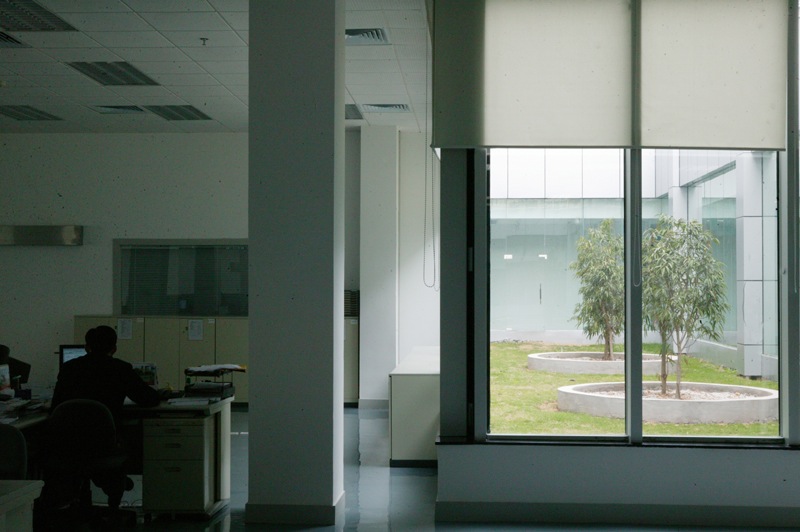
Love, 2005
Hu: So you had still consciously created the Siemens project in such a way that it provides a chance for you to walk out of your private space.
Chu: At the time, I deliberated wanted to walk out of my room of 20 square meters. Just like 1607 (2003) and Who has Stolen Our Bodies (2002), I was hoping that my creations could be in search of something more powerful. After all, there’s a self-transformation process embedded within the works, and now these works gradually mirror this kind of transformation. However, while it does not necessarily mean that it has attained progress, at least it changes in a direction in some way.
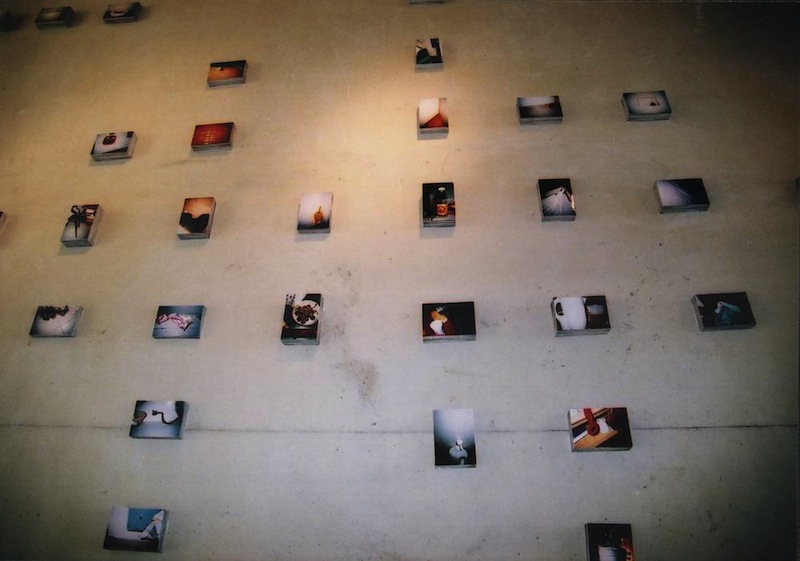 1607, 2003
1607, 2003
 Who has Stolen Our Bodies, 2002
Who has Stolen Our Bodies, 2002
Hu: One of your earliest works The Light of Rental Room (2001) had already revealed your sensitivity towards and interest in the relationship between your works and real space.

The Light of Rental Room , 2001
Chu: I didn’t know what I was doing and what I wanted to do at that time. In fact, that work was made at a point when everyone was feeling very despondent. At that time, I decided to put in all my efforts to make a work regardless of the situation. I had no money then. it took no more than 10 RMB to buy paper and scissors. But you’ll find quite a bit of excitement within one piece of paper and a pair of scissors. Maybe this is what art is, when something transforms the paper in such a way that it is no longer a piece of paper. I can definitely feel the shift. It’s a long-term strategy to me: put your ideal aside when you have no idea what to do; instead, you should do whatever you can at present within your own ability. This has a greater push in our deliberation of what constitutes art, rather than the works produced for the exhibition.
Shell of Melon Seed and Lucky Star
Hu: Some of your works are made in the setting of an exhibition, for instance The Victory of the Plant in the Second Triennial of Chinese Art (Nanjing, 2005).
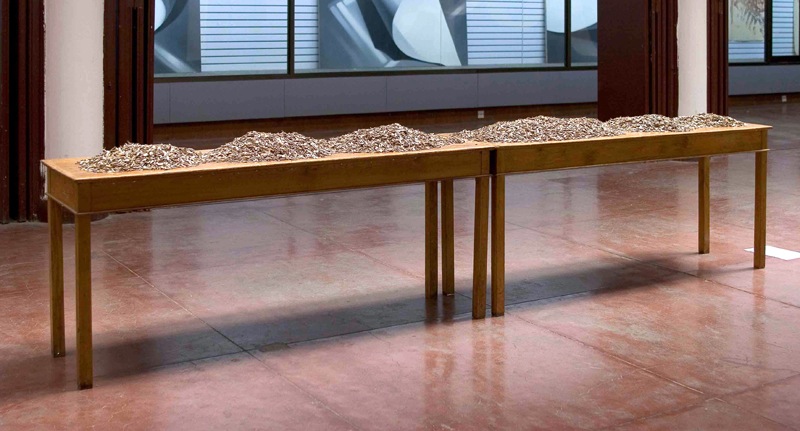
The Victory of the Plant,2005
Chu: Yes. That situation was a bit different. In fact, that work had a lot thought put into it that dealt with its being situated within the exhibition, because there were so many young artists and works there and everyone had its own meaning, motive and reason. I made it so that it targeted such a situation.
Hu: Then was it a metaphorical work?
Chu: Perhaps a little! For instance, cracking melon seeds bears some relation with speech. You have to waste time which could have been spent talking in order to crack the melon seeds. On the other hand, the most important about this is that it has no content, and the only content is what has been eaten (he laughs). The shell is left and no content remains. What the work contains is that which has always been my food for thought. For example, A Chu Yun’s Work (lucky stars and two cardboard boxes with openings, 2003) is based on the basic question: would giving the audience some luck be better and more practical than giving them a concept? I’m confronted with these questions from the outset: what on earth does the audience want from my work? And what’s in the work? If it can be said that the concept of the work is the outcome of thinking, then what is the nature and behaviour of the thinking process, and is it something one encounters by chance? The speculation still remains.
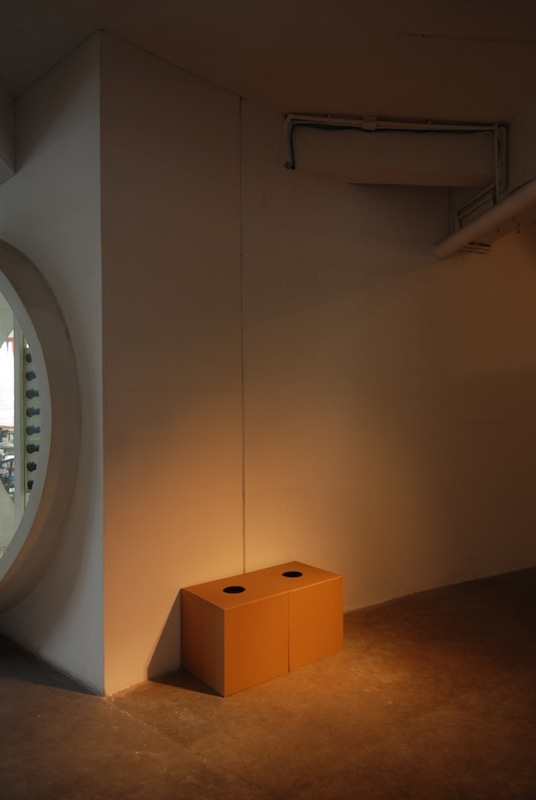 A Chu Yun’s Work , 2003
A Chu Yun’s Work , 2003
When I was creating A Chu Yun’s Work , I just want to make an invisible work which is encountered by direct touch. Although it sounds very formalistic, I had the intention to steer away from a strictly visual presentation. Maybe the film of Jing Gang Shan (井岗山, an art project on the process) has the same propose in mind. To some people, Jing Gang Shan is actually a place revered for its role in the Chinese revolutionary history. As such, someone who feels that way may not deem it as a scenic spot. Therefore, I want to explore certain ideas through what people fail to see in landscapes.
Jing Gang Shan
Chu: I wanted to make a scenic film about Jing Gang Shan, and its real purpose is to establish that Jing Gang Shan is a picturesque spot. It could be a silent film with no commentary. I want to shoot a somewhat ‘clean’ film with no frills, without mentioning aspects such as the place’s historic stature, including the victory spot of the revolution, its historic culture, the Red cradle, etc. The film will just show Jing Gong Shan as a beautiful place, like a film about scenery.
Hu: Will that produce a deliberately detached effect?
Chu: It’s probably done on purpose. When I went to visit the museums there, I found many interesting things. I was thinking of how I could use them as I was collecting them, but I didn’t expect that these things will eventually not appear at all in the work. You’ll find that whatever you do will not be enough to capture reality. At the end of it, you’ll find that the work you had imagined has vanished, but these vanished objects still finally feature in the film.
Love and Career
Chu: I think I began to take an interest in the truth within reality after creating Love. In fact, we may think we live in reality and yet never truly encounter reality. So Love seeks to challenge these rules that are institutionalised. Of course, it uses the pretext of love to get people involved. I hope that the work is not just an installation or performance, with it ending when the work is over and removed. Instead, I would like to “plant” it in a specific place that is unique and that has been modelled. Maybe I am still looking for this particular thing from Career I to Career Ⅱ. (2006) Perhaps it’s a new understanding of reality.
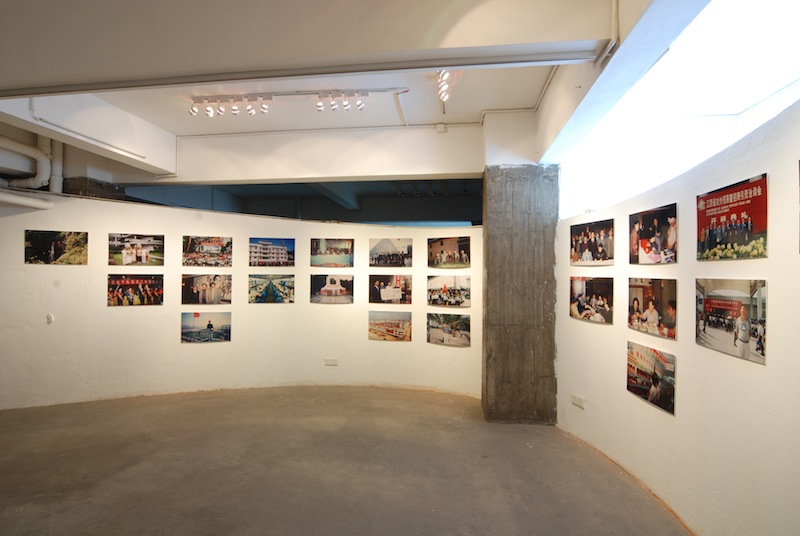
Career I,2004-0
The series of photos in Career I is not a “reflection of reality, but a reality of reflection.” In fact, that was said by Jean-Luc Godard. Liu Chuang (an artist based in Shenzhen) wrote some text for the work and quoted this line by Godard.
Hu: But there are still other different things in Career II.
Chu: Yes. Career II wanted to evoke the sense of real rights which exist in the reality in the exhibition hall, because that’s quite real – including the warrant for arrest. Anyone who finds the most wanted man can immediately seize the suspect, deliver him to the police and get a reward of 5,000 RMB.
The warrant for arrest includes the photo of the criminal and its form of exhibition. The presentation of this work resembles the content in the photos of Career I, but behind it, there’s still a kind of…well, maybe it’s important for me to display this relationship: society is established through these basic relationships, and amongst these include how the authority operates, which is a different level. However, it may be not as extreme as Career I. Career I is purely a reproduction. Uh…. It’s actually the same technique, and both of them are made by pure reproduction, and then placed in the exhibition hall.
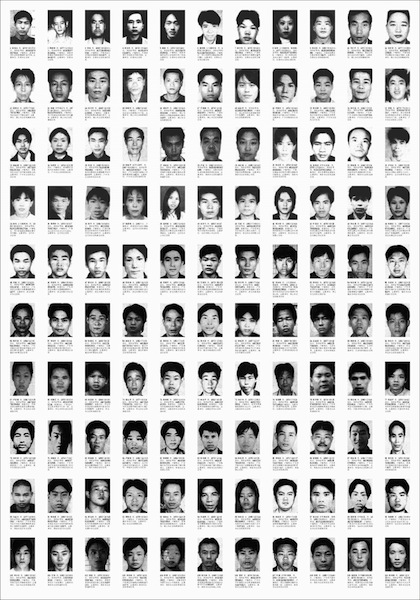
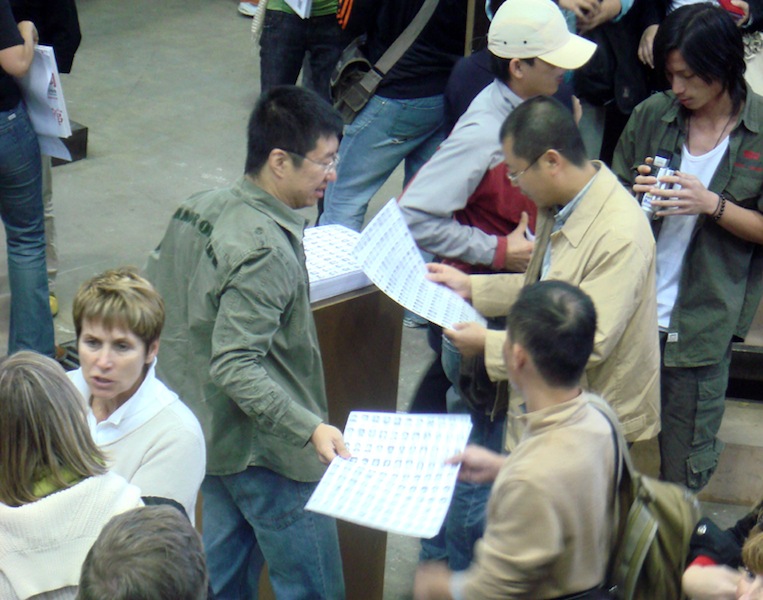
Career II,2006
Hu: My interest lies in the point of transformation and what it relies on to make the most ordinary photos turn into something else.
Chu: I’ve been thinking the last two days, and perhaps now I can answer the question you had raised during “Playing at home/Playing away:the Maze of Reality” (A project curated by Vitamin Creative Space for the 50th Venice Biennale – “Zone of Urgency” ). Can art change the reality? I think that when we question “how art can change reality”, the reality we talk about is different from the one we live in; the reality in art is not the same thing as the reality in life. For example, we’re not talking about changing reality the way political intervention does. The photos of Career Ⅰ are themselves also a kind of reality, a reality of reflection. If the audience takes it as a mere reflection of reality, it doesn’t mean they think it possesses a certain degree of meaning.
That’s why Liu Chuang and I both think there’s something special within the work when it first cames out. However we could not articulate what this “something” was. We just felt excited and moved, that we could uncover some new direction or thing from within, or something others have never encountered. However, we need to push ahead before gradually understand certain problems in the creation.
Constellation
Hu: Just like the piece Who has Stolen Our Bodies, Constellation (2006-07) has a stunning directness in its visual presentation.

Constellation , 2006-07, Exhibition view at Making Worlds, the 53rd Venice Biennale, 2009
Chu: Constellation is quite special among my works because it has many elements of the act of “creation”. My work is invisible in other pieces, but Constellation showcases a sense of confusion present during my creation of the work, as well as produces the rules of the work itself. I was doing this deliberately. I’ve always not been quite satisfied with this work. While it bears some resemblance to my previous works – because others have said that this piece especially bears the mark of my work – I don’t know what kind of overall impression my creation gives. As a matter of fact, I’ve wanted to move away slowly from this superficial impression.
Hu: I think it’s likely that when others say something is similar to your “previous works”, it is because they sense a strong lyricism in the work. When you use ordinary items like soap (in Who has Stolen Our Bodie), paper (in The Light of Rental Room), pictures in a commercial publication (in The Unspeakable Happiness,2001) and photos (in 1607) and bring on a conceptual change in them, they often exude a sense of poetry.
Chu: But if that work is captured by flash photography, or if you look at its material form, it’s actually quite ugly and messy. All the wires are tangled together. When I assemble these things, those principles which guide me along often give me a thrill, because I have to get most of the installation on-site in the state of disorder. For example, the light of printer would always be flashing because it has run out of paper, or there’d be a message left unread on the cell phone, or the electric cooker is turned on all the time; you can even hear the sound of water boiling. The experience on scene is quite different from the one you get from the photo. Many people say it’s pretty, but if you photograph it with flash and scrutinise it slowly, you’ll see that it’s actually a chaotic scene.
Hu: It’s probably some kind of progress! That is, from a simple and pure visual presentation to a scene that cannot be rendered by the medium of photo. What the photo presents is in fact a superficial visual form. It cannot reveal any aspect that is unseen aside from the scene itself …
Chu: Right! To put it in another way, the invisible bits which are hidden in my works have already begun appearing from 1607. This expanded to the work This is XX presented at the London Frieze Fair, which dealt with sleeping pills. For me, what was most interesting was that people saw the effect of drug but not the drug itself.
Hu: That is quite an interesting relationship.
Chu: This is a question I’ve been thinking about all the time ….Hmm, not thinking actually, but it’s a question that I’ve always kept in mind whilst the process of creating. Take 1607 for example: how much of reality can we reflect within a photo? And how much power does the artistry of a photo have? This is why I emphasise the act of subversion of the self – especially the parts which are invisible.
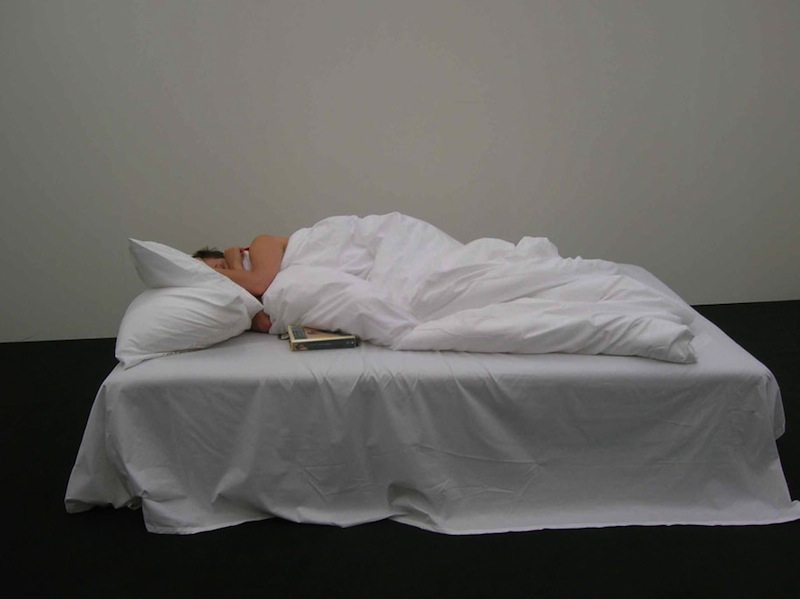
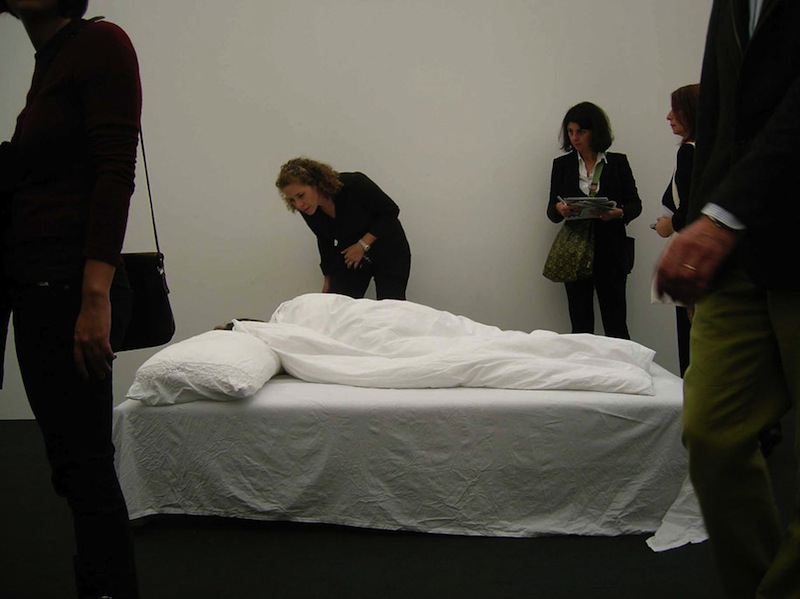
This is XX, 2006, Frienze Art Fair
(All images: Courtesy the artist and Vitamin Creative Space, Text: Vitamin Archive)